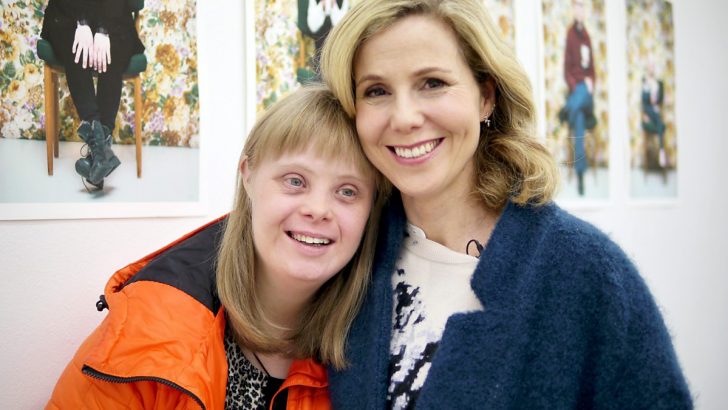Down Syndrome (DS) is a genetic disorder named after the British physician John Langdon Down who identified it in 1866. It is estimated that there are about 7,000 people in Ireland with DS and one DS baby is born in every 546 births. About 6,000 babies with DS are born annually in America. Boys are slightly more likely to be DS than girls.
Improvements across the health, education and community sectors have reduced the range of issues faced by DS children and their parents. But on the negative side, abortion of foetuses diagnosed prenatally with DS is widespread in many countries.
The basic unit of biological organisation is the living cell and the human body is composed of trillions of cells. Every cell is controlled by genetic information – the genes. Genes are packaged into structures called chromosomes and each cell has two copies of each of 23 different chromosomes, one set coming from the mother and the other from the father. The genes in the chromosomes determine how the baby’s body forms and functions during pregnancy as it grows in the womb and after birth.
DS is a lifelong condition in which a person has an extra copy of chromosome number 21. Trisomy is the medical term for having an extra copy of a chromosome and DS is also referred to as Trisomy 21. The extra chromosome affects how the baby’s body and brain develop, causing both mental and physical challenges. Much useful information about DS is published on the American Centres for Disease Control and Prevention (CDC) website, http://www.cdc.gov/ncbddd/birthdefects/downsyndrome.html
Life expectancy
People with DS commonly share some physical features including a flattened face, almond shaped eyes that slant up, short neck and small ears. Like all children, DS children vary in abilities and achievements. People with DS usually have an IQ in the mildly to moderately low range and are slower to start to speak than other children. About 15% of DS children die in their first year after birth usually from a complication arising from a heart problem but, after the first year, prospects greatly improve and the average life expectancy is about 50 years of age.
Some people with DS may have one or more birth defects or other medical problems. Some of the more common health problems include: hearing loss (up to 75% of DS people may be affected); heart defects present at birth (50%); ear infections (50% to 70%); eye disease, e.g. cataracts (up to 60%); sleep apnea (breathing stops temporarily when asleep – 50% to 75%). Other less common health problems include intestinal blockage at birth (needing surgery), thyroid disease, anemia and leukemia. The CDC estimates that the medical cost for a child with DS is about 12 times the cost for a child without DS. If the DS child also has a heart defect, the medical costs are higher again.
DS is the commonest genetic birth disorder but it is not a hereditary condition. An error in cell division at conception causes the extra chromosome in DS but it is not known for sure why this happens or how many different factors play a role in causing DS.
One factor that increases the risk of having a DS baby is the mother’s age. Women who become pregnant at 35 years of age or older are at increasingly greater risk of having a pregnancy affected by DS than women who become pregnant at a younger age.
DS can be detected in the developing foetus during pregnancy by screening tests and by diagnostic tests. Screening tests tell whether the pregnancy has a higher or lower chance of being DS.
Screening tests are safer for mother and baby than diagnostic tests but they do not provide an absolute diagnosis. If the screening test indicates a significant probability that the foetus has DS then a follow-up diagnostic test can tell whether or not the baby has DS.
Abortion
In countries where abortion is freely available, prenatal screening of the foetus for defects prompts many mothers to abort the foetus when a problem is diagnosed. In many countries a significant proportion of babies conceived with DS are aborted following confirmation of their condition by prenatal diagnostic testing. In the USA about 50% of babies conceived with DS are actually born, the other 50% are selectively aborted. Although I can, of course, understand and empathise with the concerns and distress parents feel on learning that their developing baby is afflicted with a serious medical condition, I do not agree with aborting developing babies in these circumstances. In this regard I note from a report in The Irish Catholic (03/02/2016) that Prof. Fergal Malone, Master of the Rotunda Hospital, said in November 2014 that his hospital recommends a suitable hospital to pregnant women who want to travel to the UK to abort a DS foetus.
Aborting babies diagnosed with DS is particularly unfortunate. Proponents of DS abortion claim that people with this condition lead painful and burdensome lives and are better off not being born. This is not true. The majority of babies born with DS can look forward to leading happy and contented lives into their 50s and 60s, compared to a projected lifespan of 25 years in the 1970s. Indeed research has demonstrated that people with DS are actually happier.
A paper entitled ‘Self-perceptions from People with Down Syndrome’ by Brian Skotko and others published in the American Journal of Medical Genetics noted that the overwhelming majority (almost 99%) of people with DS report they live happy and fulfilling lives. Some 96% said they like how they look. Touchingly, the DS people surveyed encouraged parents to love their DS babies and encouraged health care workers to value DS babies, saying they share similar hopes and dreams as people without DS.
*William Reville is an Emeritus Professor of Biochemistry at UCC http://understandingscience.ucc.ie


 William Reville
William Reville Sally Phillips with her son Olly
Sally Phillips with her son Olly